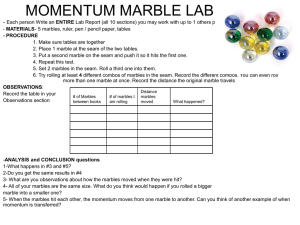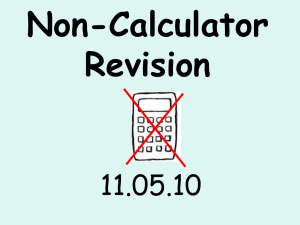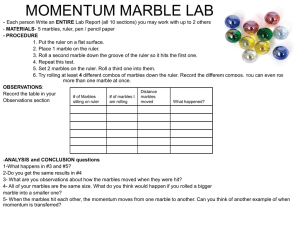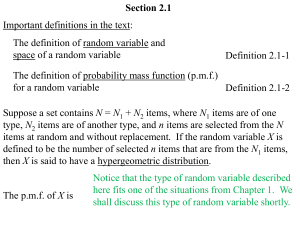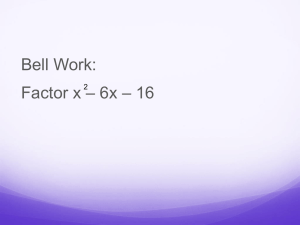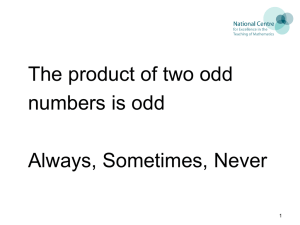Decision Making - University of Florida
advertisement
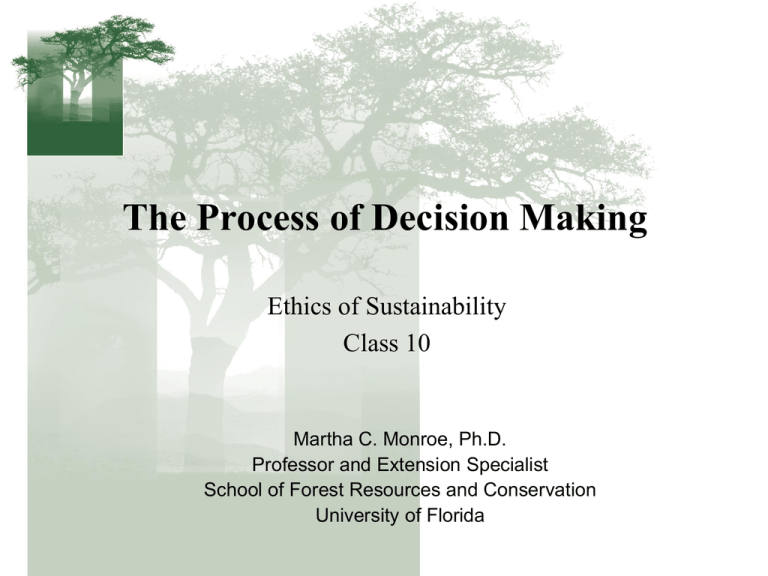
The Process of Decision Making Ethics of Sustainability Class 10 Martha C. Monroe, Ph.D. Professor and Extension Specialist School of Forest Resources and Conservation University of Florida Your Questions from Reading? • • • Rationality Problems with being rational Strategies to overcome the problems – Information • – Heuristics • – Finding/creating it; seeing it Overcoming deficits and shortcuts Complexity • Too much; unfamiliar; different disciplines Today’s Discussion • Kahneman and Tversky -- Cognitive Biases • Kaplan and Kaplan -- Reasonable Person Model • Systems Thinking with Dr. Matt Cohen • Other important elements? Rationality • We weigh the costs and benefits of each alternative • And the probability of good and bad things happening • And make the rational decision that maximizes our interests Kahneman & Tversky • Israeli psychologists • Won Nobel prize in Economics for challenging our ability to be rational with simple experiments that demonstrate cognitive hiccups • Kahneman, D. and A. Tversky. 1974. Judgment under uncertainty: heuristics and biases. Science 185, 1124-1131. Is the letter R more frequently the first or third letter in English words? Why? Availability Heuristic • Some information is more available in our brain than other, because – We have little need for some information, so we don’t know it, don’t store it, can’t retrieve it – We remember information unevenly and therefore access it unequally Estimating a Product • Intuitive total of 1x2x3x4x5x6x7x8 • And of 8x7x6x5x4x3x2x1 About what did you guess? Estimating a Product • Real answer = 40,320 • Average answer from people working up (1 x 2 x 3 x 4 x 5 x 6 x 7 x 8) is 512 • Average answer from people working down (8 x 7 x 6 x 5 x 4 x 3 x 2 x 1) is 2,250 • Why would there be such a difference? Why? Anchoring Heuristic • The way we start thinking about something greatly influences where we end up. Our thinking is “anchored” to the initial information – What percentage of the UN is African nations? • Is it more or less than 25%? • Is it more or less than 45%? Why? Anchoring Heuristic • The way we start thinking about something greatly influences where we end up. Our thinking is “anchored” to the initial information – What percentage of the UN is African nations? • Is it more or less than 25%? • Is it more or less than 45%? 10% 65% Which is more likely? A. Drawing a red marble from a bag containing 50% red marbles and 50% white marbles? B. Drawing a red marble seven times in succession, with replacement, from a bag containing 90% red marbles and 10% white marbles? A B Which is more likely? A. Drawing a red marble from a bag containing 50% red marbles and 50% white marbles? B. Drawing a red marble at least once in seven successive tries, with replacement, from a bag containing 10% red marbles and 90% white marbles? A B Simple and Complex Events • The complex event that involves multiple things dependent upon each other is less likely than 50/50, but it feels like a sure bet. • The complex event that involves one thing in multiple opportunities is more likely than 50/50, but it seems so rare. Why? Poor Sense of Probability • People tend to overestimate events that depend on multiple things happening and underestimate single events that have an opportunity to occur over multiple chances. A Scenario • A town is served by two hospitals. In the larger hospital about 45 babies are born every day. The smaller hospital sees about 15 births each day. The exact number varies. • Over one year, each hospital recorded the number of days more than 60% of the babies born were boys. Which hospital recorded more boy-birth-days? – The larger – The smaller – Both were equal Why? Representativeness Heuristic • Judgments tend to match a stereotype. Most commonly seen with guessing the probability that the quiet woman with glasses is a librarian in a room with 30% librarians. • Overconfidence that small sample sizes match global trend Relevance? • How do these cognitive biases affect our ability to make decisions about sustainability questions? – Availability – Anchoring – Poor Probability – Representativeness Some Ideas • The ability to change our mind when given new information • The ability to try something again after the first failure • The ability to consider all the data after the media splash one perspective • Overconfidence in complex and dependent technologies • Overconfidence in stereotypes rather than data What to do? • Let computers make decisions for us? • Work on avoiding all previous knowledge? • Learn where our biases tend to be? Reasonable Person Model • A proposed framework or platform for creating opportunities for people to be engaged in solving problems • Stems from an awareness of the reasons people do not engage, or engage in anger Why some people opt out – “I don’t know enough; it’s all too confusing” • A lack of awareness, understanding, competence – “I don’t have time” • It’s not a priority • Avoidance – confusion or overwhelmed – “I don’t really care” • A lack of vision, concern, hope • Avoidance – confusion or overwhelmed – “There’s nothing I can do” • A lack of motivation, skill, empowerment • A lack of vision, concern, hope The Insights • People are information seekers and processors – Information is often conflicting, uncertain, or missing • Without meaningful, helpful information, we do not understand – Without understanding, we do not begin to imagine • Without a vision of the possible, we are hopeless – Without hope, we are not engaged • Without chances to practice, we are without skills – Without skills, we are not competent People are not attracted to situations where they are not competent, informed, and valued The Reasonable Person Model Kaplan & Kaplan, 2008, Conservation Biology, 22(4):826-829 Shared mental model Knowledge Understanding Issue and process Being effective Competence Skills to act Practice Meaningful action Hopeful Helpful Engagement Mental Models • Individuals build their own, often from experience • As we learn, our mental models/cognitive maps, become richer, denser, more flexible • Teaching is the act of helping learners build models, or sharing you model with them • Some sort of model already exists • Learners code new information into the appropriate model where it is relevant and meaningful • Having a mental model is to understand Being Effective = Having Capacity • People, when possible, want to be useful & effective • May instead be confused, stressed, unpleasant, destructive, because… • They are not being heard; the system must become accessible • They are overwhelmed; they must be able to restore mental capacity • They don’t know how; they need skills and opportunities to practice to become competent Meaningful Action • We want to be needed • And so we participate in efforts that inspire us – Blessed Unrest (Hawken 2007) – 108,705 organizations! • Subdividing big projects into small steps makes it easier to imagine reasonable actions • Knowing about others’ successes help us imagine how we might act – Media can help; success stories help • We need to cultivate this desire to be needed and to make a difference with opportunities to be engaged A Checklist for Educators & Researchers • Is my program, unit, or course building their mental models? – Conveying relevant & meaningful knowledge? – Building understanding of the issue? – Building understanding of the process? • Am I helping people become effective? – Developing competence with issue and process? – Developing skills to act? – Having capacity to attend, to focus? • Am I empowering participants? – Do they feel more hopeful? – Do they want to participate? – Are they more engaged? Value of Good Examples Learning about a green building Builds a mental model of sustainable construction Conveys relevant & meaningful knowledge Builds understanding Empowers learners They become more hopeful Let’s Look at Stories • A fact-based narrative filled with meaning – As in a fable or myth, but modernized for today • • • • • A storyline – challenge, attempts, solution Characters similar to the audience Specific, vivid settings that can be imagined Action, quotes, etc. to increase interest A “natural” form of communication Benefits of Stories • Interesting – so they convey memorable information • Relevant and meaningful • Solving problems • Painting a picture of the possible • Testimonies, success stories, examples • Vicarious experience What Can a Story Accomplish? • Build a mental model – Conveying relevant & meaningful knowledge – Building understanding of the issue – Building understanding of the process • Empower learners with meaningful action – Do they feel more hopeful – Do they want to participate – Are they more engaged Understanding Systems • Complete initial worksheet for systems activity



